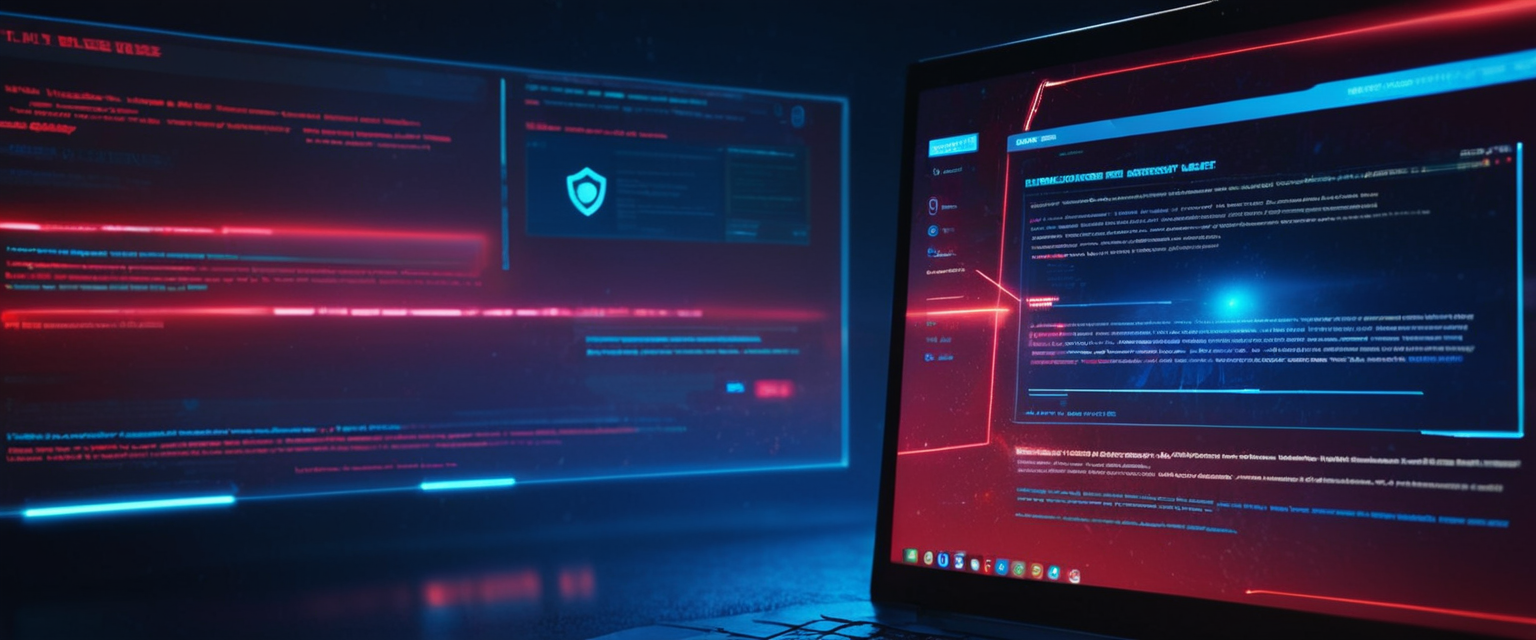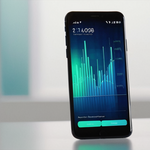
Executive Summary: Drive-by download attacks represent one of the most insidious threats in modern cybersecurity, capable of infecting devices without any user interaction beyond visiting a compromised website. Unlike traditional malware delivery mechanisms that rely on social engineering or user mistakes, drive-by downloads exploit security vulnerabilities in web browsers, plugins, and operating systems to automatically install malicious code. These attacks have evolved significantly since their emergence, with contemporary variants like FakeUpdates and SocGholish becoming increasingly prevalent in 2024 and 2025, targeting a wide spectrum of organizations and individuals. The threat landscape demonstrates that even legitimate websites can become vectors for malware distribution when compromised by attackers, making comprehensive understanding and multi-layered defense strategies essential for protecting personal data, financial information, and organizational networks. This report examines the mechanics of drive-by download attacks, their various manifestations, the diverse malware payloads they deliver, and provides detailed guidance on detection and prevention at both individual and organizational levels.
Understanding Drive-By Downloads: Definition and Mechanisms
Fundamental Concepts and Attack Characteristics
A drive-by download attack constitutes an involuntary and often undetected installation of malicious code, files, or software onto a user’s device without explicit knowledge or consent. The defining characteristic that distinguishes drive-by downloads from other cyberattacks is the minimal or complete absence of user action required to trigger infection, as attackers exploit hidden security vulnerabilities in web browsers, plugins, or operating systems rather than relying on social engineering tactics. The term “drive-by” itself reflects the rapidity and passivity of the attack mechanism—much like a drive-by shooting occurs instantaneously as one passes a location, a drive-by download infection can occur silently as a user simply visits a compromised webpage. Unlike many traditional malware infections that necessitate deliberate user actions such as clicking malicious links, downloading email attachments, or accepting installation prompts, drive-by downloads operate covertly in the background.
The technical foundation of drive-by download attacks relies on the exploitation of security flaws that have not yet been patched or, more commonly, remain unfixed due to user negligence in applying available security updates. When a user’s browser loads a compromised webpage, malicious scripts embedded within that page automatically execute, scanning the visitor’s system for known vulnerabilities. If such vulnerabilities are discovered, exploit kits—specialized toolkits designed to automatically identify and leverage security flaws—take control and silently download and execute malware payloads. This entire process typically occurs without any visible indication to the user, meaning victims often remain unaware of their infection until malware begins manifesting symptoms such as system slowdowns, unexpected network activity, or the presentation of ransom demands.
Two Primary Infection Methodologies
Security researchers have identified two distinct methodologies through which drive-by downloads compromise devices, differentiated primarily by the degree of user involvement required. The first methodology encompasses authorized downloads with hidden payloads, wherein users are deceived through social engineering or phishing tactics into taking an action that appears legitimate but results in malware installation. In these scenarios, users might click on what they believe to be a trustworthy link, download software that appears to be a legitimate update, or interact with an advertisement that seems innocuous. Common social engineering tactics employed include fake security alerts claiming that antivirus software requires updating, counterfeit download prompts for popular applications like Flash Player, or deceptive notifications suggesting that system updates are necessary. While these attacks technically involve user action, the user does not possess full awareness or understanding of the actual implications of their actions.
Conversely, unauthorized downloads without any notification represent the second and arguably more dangerous methodology, as they involve absolutely no user interaction whatsoever. In these truly passive attacks, visitors to compromised websites become infected simply through the act of loading the page, with malicious code executing automatically without any prompts, requests for permission, or visible indicators. This category of attack is facilitated by sophisticated exploitation techniques that scan for vulnerabilities in the browser, plugins, or operating system and immediately exploit discovered flaws to trigger silent malware downloads. The victim experiences no warning signs and may continue browsing unaware that malware has been successfully installed on their device.
The Attack Kill Chain
Drive-by download attacks follow a characteristic progression through several stages, which cybersecurity professionals term the “attack kill chain” or attack lifecycle. The initial stage involves website compromise, wherein threat actors either create entirely malicious websites designed to host exploit kits and malware or compromise legitimate, trusted websites through various attack vectors such as SQL injection, weak credentials, or unpatched vulnerabilities. The attacker injects malicious code—often hidden within advertisements, images, or legitimate-appearing website content—into the compromised site’s infrastructure. This injected code remains dormant, waiting for visitor interactions.
During the distribution stage, the malicious code lies in wait on the compromised website, anticipating visitor arrivals. Threat actors may utilize various techniques to drive traffic to their compromised sites, including search engine optimization (SEO) poisoning, malvertising campaigns, paid advertisements, or watering hole attacks targeting specific industry verticals. When users visit the compromised site—whether through direct access, search results, or inadvertent clicks—the malicious code becomes activated.
The exploit stage represents the critical technical moment where the malicious script takes action. Upon page load, hidden scripts automatically execute within the user’s browser, systematically scanning the visitor’s system for known vulnerabilities in the browser, installed plugins, or the operating system. This scanning process examines version information, identifies which software is installed, and cross-references this information against a database of known exploitable vulnerabilities. If vulnerabilities are identified, exploit kits automatically select the most appropriate and likely-to-succeed exploit for the discovered vulnerability.
The infection stage follows successful exploitation. The selected exploit is executed against the identified vulnerability, establishing a foothold on the victim’s system. In many cases, the initial payload downloaded is extremely small—often merely a few kilobytes—as its primary function is simply to contact attacker infrastructure and download additional malware components. This multi-stage approach provides attackers with flexibility and reduces detection risk, as the initial dropper is lightweight and may evade signature-based detection mechanisms.
Finally, the execution stage occurs as the downloaded malware begins its intended malicious activities. Depending on the specific malware deployed, this might involve data exfiltration, lateral network movement, ransomware deployment, credential theft, or establishing backdoor access for future exploitation. By this point, the attacker has achieved initial system compromise and can pursue their primary objectives, whether financial gain, espionage, network disruption, or other goals.
Attack Vectors and Types of Drive-By Download Attacks
Malvertising: The Deceptive Advertising Vector
Malvertising, a portmanteau of “malicious advertising,” represents one of the most prevalent and effective vectors for delivering drive-by downloads. This attack methodology involves injecting malicious code directly into legitimate advertising networks or purchasing advertising space on high-traffic, legitimate websites to serve infected advertisements to unsuspecting visitors. The sophistication of malvertising campaigns lies in their ability to leverage the trust users place in established websites and advertising networks, with attackers often successfully placing malicious advertisements on major platforms including those operated by Google, Facebook, and other recognized entities.
The mechanics of malvertising attacks involve several layers of deception. Attackers purchase advertising slots on legitimate ad networks, either directly or through fraudulent means, and embed malicious code or redirect scripts within the advertisement files. When users view these advertisements—often with no click interaction required—hidden code within the ad automatically executes, potentially redirecting users to malicious sites, initiating drive-by downloads, or exploiting browser vulnerabilities. Recent campaigns have demonstrated the sophistication of contemporary malvertising, with Microsoft Threat Intelligence detecting a large-scale malvertising campaign in December 2024 that compromised nearly one million devices globally by distributing information-stealing malware through compromised illegal streaming websites. The attack chain involved multiple redirect stages, ultimately leading victims to GitHub-hosted malware repositories disguised as legitimate content.
Modern malvertising campaigns employ increasingly deceptive lures to enhance their success rates. Researchers identified campaigns impersonating popular AI video generation tools like Luma AI and Canva Dream Lab through fake websites promoted via Facebook and LinkedIn advertisements. Other campaigns have mimicked software installers for legitimate tools such as WinSCP, PuTTY, and OBS Studio, tricking users into downloading counterfeit versions that distributed ransomware and information-stealing malware. The concerning aspect of these campaigns is that they can succeed regardless of whether users click on advertisements, as many implementations trigger infections automatically upon ad loading.
Cross-Site Scripting (XSS) Through Compromised Websites
Cross-Site Scripting (XSS) attacks provide another critical vector for drive-by download delivery, particularly through compromised legitimate websites. XSS vulnerabilities occur when web applications fail to properly validate and sanitize user input, allowing attackers to inject malicious scripts into web pages that execute within the browsers of subsequent visitors. Through XSS attacks, malicious code becomes embedded within legitimate website content, blending seamlessly into the normal page structure and making detection extraordinarily difficult for both users and security systems.
The attack implementation typically involves attackers identifying web applications with inadequate input validation, such as comment sections, user profile fields, or search functions. By injecting malicious JavaScript code into these user-controlled fields, attackers ensure that their code executes for every subsequent visitor who views the contaminated content. The injected scripts can initiate drive-by downloads, exploit browser vulnerabilities, redirect users to malicious sites, or perform reconnaissance on visitor systems. What distinguishes XSS-based drive-by downloads from other vectors is their persistence—contaminated content may remain on legitimate websites for extended periods, infecting numerous victims before discovery and remediation.
Automated Exploit Kit Attacks
Exploit kits represent highly automated toolsets designed to identify vulnerabilities and deliver appropriate malware payloads with minimal manual intervention from attackers. These kits are often rented or sold in cybercriminal marketplaces, democratizing the ability to conduct sophisticated drive-by download campaigns to attackers possessing limited technical expertise. Notable historical exploit kits include the Angler Exploit Kit, which targeted vulnerabilities in Flash, Java, and Silverlight and distributed ransomware and banking trojans; the Nuclear Exploit Kit, which targeted Internet Explorer and Adobe Flash Player; and the RIG Exploit Kit, which remains active and continues targeting outdated browser versions.
The operational model of exploit kits involves hosting them on compromised or dedicated malicious servers, where they automatically analyze visiting browsers. Upon a user’s visit to an exploit kit-hosting site, the kit executes a reconnaissance phase, examining the browser type and version, installed plugins, operating system version, and other system characteristics. This information is cross-referenced against a database of known exploitable vulnerabilities, and the kit automatically selects and executes the most appropriate exploit for the victim’s system configuration. The sophistication of modern exploit kits means they can successfully compromise fully patched systems if zero-day vulnerabilities exist, making them particularly dangerous in advanced attack campaigns.
Watering Hole Attacks
Watering hole attacks represent a targeted variant of drive-by download campaigns wherein threat actors specifically compromise websites known to be frequented by members of a particular industry, organization, or geographic region. The term derives from wildlife predation, where predators position themselves at water sources where prey congregates, waiting for opportunities to attack. In the cybersecurity context, attackers research websites commonly visited by their intended targets and compromise these sites to deploy drive-by downloads specifically targeting the visitor demographics they seek to exploit.
Watering hole attacks exemplify how drive-by downloads enable highly targeted operations with precision targeting capabilities. For instance, attackers might compromise websites frequently visited by financial sector employees, healthcare providers, or government officials, ensuring that their drive-by download campaigns reach individuals with access to valuable data or critical systems. The MageCart attacks, initiated around 2015 and continuing today, represent a prominent example of watering hole-style drive-by download campaigns, wherein threat actors compromised e-commerce websites to inject malware that harvests payment card information from customers during the checkout process. Any customer visiting an affected retailer’s website during a purchase transaction became a victim of malware-driven credential theft.
Malware Payloads and Consequences of Drive-By Downloads
Diversified Malware Arsenal Delivered Through Drive-By Mechanisms
Drive-by download attacks serve as delivery mechanisms for an extensive array of malware types, with threat actors selecting specific payloads based on their strategic objectives and target characteristics. Ransomware represents one of the most destructive payload categories, as drive-by downloads have become increasingly prevalent as initial access vectors for ransomware campaigns. Recent examples illustrate this trend, with Cloak ransomware spreading through drive-by downloads disguised as fake Windows update installers, automatically encrypting victim files and demanding ransom payments for decryption keys. The FileFix technique represents another sophisticated approach, wherein victims are tricked into executing commands through their File Explorer, leading to Remote Access Trojan installations that eventually deploy ransomware.
Trojans and Remote Access Trojans (RATs) represent another critical malware category frequently delivered through drive-by downloads. Trojans appear as legitimate software but harbor hidden malicious functionality, potentially granting attackers remote control over compromised systems. The SocGholish malware (also known as FakeUpdates), identified as the most prevalent malware globally as of March 2025, exemplifies this trend, leveraging drive-by downloads masquerading as software updates to deliver JavaScript payloads that establish persistent backdoor access. Once SocGholish gains initial access, it performs reconnaissance, and in some cases, establishes Python-based backdoors that enable attackers to execute arbitrary commands on compromised systems.
Information-stealing malware constitutes another prominent payload category, with drive-by downloads frequently delivering stealers designed to harvest sensitive information including credentials, banking details, cryptocurrency wallet information, and personal identification documents. The Lumma Stealer, identified in a massive phishing and drive-by download campaign affecting over 1,150 organizations and 7,000 users in 2025, exemplifies the scale of information theft campaigns, with attackers using legitimate platforms including Webflow’s CDN to distribute malware that exfiltrates sensitive data.
Botnets and cryptojacking malware represent additional payload categories delivered through drive-by downloads. Botnet malware integrates compromised systems into distributed networks under attacker control, enabling the execution of large-scale attacks such as distributed denial-of-service (DDoS) campaigns, spam distribution, or additional malware propagation. Cryptojacking malware covertly utilizes victim computing resources to mine cryptocurrency, consuming processing power and electricity while remaining largely unnoticed by users.
Spyware and keyloggers round out the malware arsenal, enabling attackers to conduct surveillance on victims’ activities and capture sensitive information through keystroke monitoring. These malware types can remain dormant and difficult to detect, operating in system memory and exfiltrating captured information to attacker infrastructure.
Broader Consequences and Organizational Impact
The consequences of successful drive-by download infections extend far beyond individual device compromise, creating cascading impacts across organizational networks and critical infrastructure. When an employee’s device becomes compromised through a drive-by download, the initial infection frequently serves as a beachhead for lateral network movement, wherein attackers leverage compromised credentials and network access to propagate further into organizational systems. The illustrative scenario described by multiple sources demonstrates this progression: an employee at a large organization conducts research, visits what appears to be a legitimate website, becomes infected through a drive-by download of Trojan malware without any awareness, and the malware then jumps from the infected endpoint into the organizational network, ultimately leading to ransomware deployment across multiple systems.
Financial consequences associated with drive-by download infections prove severe, encompassing direct losses from ransomware payments, data breach notification costs, system downtime, productivity losses, and regulatory fines. Organizations operating in regulated industries face additional compliance burdens, as drive-by download-facilitated breaches may trigger obligations to notify affected individuals, conduct forensic investigations, and implement remediation measures.
Reputational damage compounds these direct financial impacts, particularly when drive-by downloads compromise customer data or compromise sensitive organizational information. Customers lose trust in organizations unable to protect their information, potentially leading to customer attrition and revenue losses that extend years beyond the initial incident.
Real-World Examples and Emerging Threats

FakeUpdates and Contemporary Malware Campaigns
FakeUpdates, also known as SocGholish, has emerged as the most prevalent malware globally as of March 2025, with significant portions of its distribution occurring through drive-by download mechanisms. Active since at least 2018 and associated with the suspected Russian cybercrime group Evil Corp, FakeUpdates continues to evolve its tactics and techniques while maintaining remarkable operational consistency. The malware leverages compromised websites to present visitors with deceptive notifications claiming that browser updates or other common software require installation. Unsuspecting users who download and execute these “updates” actually run malicious JavaScript payloads that connect to attacker infrastructure and facilitate further malware deployment.
Recent FakeUpdates campaigns demonstrate ongoing tactical evolution, with the malware operators shifting from delivery within ZIP file wrappers to direct JavaScript delivery in over 80 percent of 2024 cases. In 2024, FakeUpdates activity exhibited dual peaks—March 2024 and July through September 2024—with the latter period coinciding with tactical changes including the introduction of homoglyph-based lure filenames designed to evade security detection. The operational model of FakeUpdates involves reconnaissance on initial infection, with the majority of cases not progressing beyond this reconnaissance phase, suggesting selective victim targeting rather than indiscriminate campaigns.
Particularly concerning are FakeUpdates campaigns that progress beyond reconnaissance to deploy secondary payloads. One activity cluster involved installing Python 3.12.0 to establish persistent backdoors, accompanied by credential theft and reconnaissance that, in some cases, reportedly led to RansomHub ransomware attacks. Another cluster incorporated sophisticated credential harvesting techniques, extracting browser credentials from Chrome and Edge browsers and harvesting NTLM hashes through forced authentication mechanisms, potentially enabling attackers to compromise external organizations receiving email from victims.
Other Recent Drive-By Download Campaigns
The ClickFix variant expanding to mobile platforms in May 2025 illustrates the broadening scope of drive-by download threats beyond traditional desktop environments. Initially targeting Windows users, the refined ClickFix campaign extended its reach to macOS, iOS, and Android platforms, with mobile devices experiencing infections without any user interaction upon visiting compromised webpages. This expansion demonstrates attackers’ recognition of the vulnerability of mobile platforms and their efforts to develop cross-platform attack capabilities.
Torpig banking Trojan represents a historical example of sophisticated drive-by download campaigns that remains relevant to understanding attack evolution. Delivered through malicious banner advertisements exploiting vulnerabilities in outdated Java, Flash, or Acrobat Reader installations, Torpig would redirect users to download sites and establish banking credential theft capabilities. This example illustrates how drive-by downloads can specifically target financial information and compromise financial services.
Detecting and Identifying Drive-By Download Attacks
Indicators of Compromise and Detection Methodologies
Detecting drive-by download attacks presents significant challenges due to their silent and often unnoticed installation mechanisms, but security professionals have identified several categories of indicators that may signal compromise. Network-based indicators represent one category, including unusual outbound network traffic from compromised endpoints, unexpected DNS queries to known malicious domains, or sudden spikes in data exfiltration that may indicate information theft or command-and-control communication. Security teams monitoring network traffic for these anomalies can identify compromised systems before significant damage occurs.
Host-based indicators encompass on-device evidence of compromise, including unexpected software installations, registry modifications, process executions with suspicious characteristics, or new scheduled tasks that might indicate persistence mechanisms. Endpoint detection and response (EDR) systems excel at identifying these host-based indicators through continuous monitoring of system behavior.
Behavioral indicators represent emerging detection methodologies that focus on identifying suspicious patterns of activity rather than specific malware signatures. Memory protection technologies and behavioral analytics can identify exploit-like behaviors such as unusual process handle requests, suspicious DLL injections, or attempts to access sensitive system functions that characterize exploit execution and malware installation.
Technical Detection Methods
Security alerts from antivirus and malware scanning software provide reactive detection, identifying malware after it has been successfully downloaded and installed on devices. While less ideal than preventing infection entirely, such detection allows security teams to initiate containment and remediation before malware causes significant damage. Organizations maintaining updated antivirus definitions benefit from these capabilities, though they provide limited protection against zero-day exploits for which no signatures exist.
Sandboxing and dynamic malware analysis represent more advanced detection techniques, wherein suspicious files or websites are executed in isolated environments to observe their behavior without risk to production systems. This approach can detect previously unknown malware variants through behavioral analysis, as malware invariably exhibits suspicious activities—encryption, file deletion, network communication to suspicious domains—during execution. Browser sandboxing, in particular, can protect against drive-by download attacks by containing malicious scripts within isolated browser environments, preventing them from accessing the underlying operating system.
Network-based intrusion detection and web application firewalls (WAFs) can identify and block access to known malicious domains hosting drive-by downloads or exploit kits. WAFs specifically analyze HTTP traffic for patterns indicative of malicious activity, including attempts to exploit known vulnerabilities or inject malicious scripts. Similarly, DNS filtering services can blocklist known malicious domains, preventing users from accessing sites hosting drive-by download campaigns.
Comprehensive Prevention Strategies for Individuals
Software Maintenance and Vulnerability Management
The single most critical protective measure against drive-by download attacks involves maintaining current software versions with all available security patches applied. Threat actors exploit known vulnerabilities that security patches address, meaning that exploiting outdated systems requires no sophisticated techniques—merely applying existing public exploits against known flaws. Users prioritizing three categories of software for regular updates—web browsers, operating systems, and browser plugins—address the most common targets of drive-by download attack campaigns.
The operational implementation of software maintenance involves enabling automatic updates when possible, as this eliminates the human element of remembering to manually install patches. For critical software components, users should check for updates regularly or enable automatic update notifications that alert users when security patches become available.
Administrative Privilege Management
Implementing appropriate administrative privilege controls represents another fundamental protective measure. Many drive-by download attacks require elevated system privileges to execute fully, establish persistence, or access sensitive system functions. By using secondary non-administrative user accounts for everyday web browsing and work tasks, and reserving administrative accounts solely for necessary software installations and system administration, users substantially reduce the impact of successful malware infections. If malware executes within the context of a limited user account, it cannot perform actions requiring administrative privileges, significantly constraining its capabilities.
Attack Surface Reduction Through Software Minimization
Reducing the quantity of installed software on devices directly reduces the attack surface available to threat actors. Each installed application represents a potential vulnerability point that attackers could exploit, and older, unmaintained applications with unpatched vulnerabilities prove particularly attractive targets. Users should inventory installed software, uninstalling applications no longer in use or those no longer receiving security updates from vendors. Browser extensions and plugins deserve particular attention, as these components frequently harbor vulnerabilities exploitable through drive-by download attack vectors.
Security Software Deployment
Installing comprehensive security software on all personal devices provides multiple layers of protection against drive-by downloads. Antivirus software detects known malware through signature-based detection, while more advanced endpoint protection platforms incorporate behavioral detection, machine learning, and heuristics to identify previously unknown threats. Additional security software components including ad-blockers, DNS filtering, and browser isolation technologies complement traditional antivirus by preventing access to malicious sites or executing web content in isolated environments.
Web Browsing Safety Practices
User behavior during web browsing significantly influences drive-by download risk exposure. Users should avoid visiting websites with suspicious characteristics, including those offering illegal content, file-sharing sites with poor reputations, and adult content sites where malware prevalence remains elevated. Mainstream, well-established websites statistically present lower drive-by download risk, though even legitimate sites occasionally become compromised.
Careful scrutiny of security warnings represents another critical practice, as fake security warnings represent common attack vectors. Users should examine security popups carefully for indicators of fraudulence, including spelling errors, grammatical mistakes, or unusual graphical artifacts that indicate scam attempts rather than legitimate security warnings. Similarly, users should exercise caution regarding offers promising free items, gifts, or rewards through web advertisements, as these frequently serve as malvertising vectors.
Supplementary Technologies and Services
Ad-blockers provide significant protection against malvertising-based drive-by download campaigns by preventing advertisements from loading and executing. By blocking ads at the network level before they load in the browser, ad-blockers prevent malicious advertisements from delivering drive-by download payloads.
DNS filtering services block access to known malicious domains at the DNS resolution level, preventing browsers from even connecting to sites hosting drive-by downloads or exploit kits. These services maintain blocklists of malicious domains and use machine learning and threat intelligence to identify and block newly discovered malicious sites.
Browser isolation technology represents an advanced protective measure, particularly for users with high risk profiles or those handling sensitive information. By executing all web browsing in isolated remote environments separate from the user’s actual device, browser isolation ensures that even successful malware infections cannot reach the user’s endpoint or access sensitive local data.
Organizational-Level Defense and Advanced Technologies

Enterprise Endpoint Protection and Detection
Organizations deploy sophisticated endpoint protection platforms (EPPs) and endpoint detection and response (EDR) systems that provide capabilities beyond consumer-grade antivirus. EPPs combine multiple protective layers including next-generation antivirus (NGAV), behavioral detection, machine learning, and exploit prevention. EDR systems provide continuous monitoring of endpoint activity, enabling threat hunting and rapid incident response when suspicious activity occurs. These systems collect vast amounts of endpoint telemetry including process execution, network connections, file modifications, and registry changes, correlating this data to identify sophisticated attack patterns.
Network Segmentation and Zero Trust Architecture
Network segmentation represents a critical organizational defense strategy that limits the lateral movement threat actors can achieve after compromising an endpoint through drive-by download. By dividing networks into logical segments with restricted traffic flows between segments, organizations ensure that compromised endpoints cannot automatically access all organizational systems. Microsegmentation takes this concept further, implementing granular policies based on application-layer information to restrict traffic at the most specific level possible. In the event of a drive-by download infection, network segmentation ensures that the compromise remains localized rather than enabling attackers to exploit the compromised endpoint as a pivot point for lateral movement.
Zero Trust Architecture implements the principle that no user, device, or system should be inherently trusted, requiring continuous verification of identity and device security posture before granting access to resources. This architecture proves particularly effective against drive-by download scenarios, as it assumes that endpoint compromise is likely and implements controls that prevent compromised endpoints from accessing sensitive resources.
Web Application Firewalls and Advanced Threat Prevention
Web Application Firewalls (WAFs) operate at the application layer (Layer 7 of the OSI model), inspecting HTTP requests and responses for patterns indicative of malicious activity. WAFs can identify and block exploitation attempts targeting web applications, prevent malicious code injection, and mitigate various attack vectors. When deployed between users and web applications, WAFs create a defensive shield that can block known attack patterns while allowing legitimate traffic.
Browser security solutions and Script blocking technology prevent the automatic execution of potentially malicious scripts that drive-by download attacks rely upon. These solutions can disable or sandbox script execution, preventing exploit kits from functioning effectively even if they successfully reach user browsers.
DNS Filtering and URL Filtering
Organizations deploy DNS filtering solutions that blocklist known malicious domains at the DNS resolver level, preventing users from accessing sites hosting drive-by downloads or exploit kits. These solutions leverage threat intelligence feeds, machine learning, and behavioral analysis to identify malicious domains and prevent organizational users from accessing them. Advanced DNS filtering solutions can identify and block newly discovered malicious domains, providing protection against rapidly evolving threats.
Content Disarm and Reconstruction (CDR)
Content Disarm and Reconstruction (CDR) technology represents an emerging defense approach specifically designed to protect against file-borne malware delivery, including those delivered through drive-by download campaigns. CDR technology operates on the principle that all files should be assumed malicious and processes incoming files by decomposing them, removing executable content and active elements (macros, scripts, embedded objects), and reconstructing clean versions that preserve usable content while eliminating infection vectors. This approach proves particularly effective against zero-day exploits hidden within document files, as CDR removes malicious content regardless of whether security systems recognize it as malicious.
Backup and Disaster Recovery Planning
Organizations must implement comprehensive backup and disaster recovery strategies that enable rapid recovery in the event of ransomware infections resulting from drive-by downloads. The 3-2-1 backup rule—maintaining three copies of critical data on two different media types with one copy stored offsite—provides resilience against ransomware attacks. Critically, organizations must ensure backup systems remain isolated from production networks and include immutable or air-gapped backup copies that attackers cannot modify or encrypt. Regular testing of backup recovery procedures ensures that when incidents occur, recovery processes function as intended.
Security Information and Event Management (SIEM)
SIEM solutions provide centralized collection, correlation, and analysis of security logs from across organizational infrastructure, enabling detection of sophisticated attack patterns that might not be apparent through individual system monitoring. SIEM platforms can identify drive-by download indicators including unusual network traffic patterns, suspicious system processes, unauthorized access attempts, and other signs of compromise. Modern SIEM solutions incorporate User and Entity Behavior Analysis (UEBA) and machine learning to identify anomalies indicative of security incidents.
Threat Intelligence Integration
Organizations should integrate threat intelligence feeds into their security infrastructure to ensure real-time awareness of emerging drive-by download campaigns, known malicious domains, and indicators of compromise. Threat intelligence feeds provide information about newly discovered exploit kits, malvertising campaigns, and other attack tactics, enabling organizations to proactively implement protective measures.
Best Practices and Organizational Recommendations
Security Awareness Training and User Education
Despite sophisticated technological defenses, human behavior remains a critical vulnerability in drive-by download defense. Organizations should implement regular security awareness training programs educating employees about drive-by download risks, indicators of suspicious websites, recognition of fake security alerts, and appropriate responses to security incidents. Effective training programs incorporate phishing simulations and real-world examples to reinforce learning and build organizational security culture.
Incident Response Planning
Organizations should develop detailed incident response plans specifically addressing drive-by download incidents, ensuring that response teams understand the appropriate actions to take in various scenarios. Response plans should address containment measures (isolating compromised endpoints, blocking malicious domains), eradication techniques (removing malware, rebuilding systems), recovery procedures (restoring from clean backups, validating system integrity), and post-incident activities (forensic analysis, lessons learned). Regular tabletop exercises and simulations should test incident response capabilities before actual incidents occur.
Vulnerability Management Program
Organizations should implement risk-based vulnerability management programs that identify, prioritize, and remediate security vulnerabilities before threat actors can exploit them through drive-by download campaigns. This requires maintaining comprehensive asset inventories, conducting regular vulnerability assessments, prioritizing remediation efforts based on risk levels and exploitability, and tracking remediation completion.
Phishing and Social Engineering Defenses
Since authorized drive-by downloads often rely on social engineering and phishing tactics, organizations should implement email security solutions that detect and quarantine suspicious messages before users encounter them. These solutions should incorporate attachment scanning, URL filtering, and machine learning to identify phishing attempts. Additionally, organizations should implement DMARC, SPF, and DKIM authentication to prevent email spoofing and domain impersonation.

Third-Party and Supply Chain Risk Management
Organizations should assess the security posture of third-party vendors and service providers, as compromised third-party websites can serve as watering hole attack vectors reaching organizational employees and customers. Due diligence processes should assess vendor vulnerability management practices, incident response capabilities, and security awareness programs.
Navigating Safely Online: Dodging Drive-Bys
Drive-by download attacks represent a persistent and evolving cybersecurity threat that continues to compromise millions of devices globally despite increasing awareness and technological defenses. The fundamental danger of drive-by downloads lies in their ability to infect systems without any user interaction beyond the simple act of web browsing, bypassing many traditional security awareness measures that rely on identifying suspicious user actions. The attack landscape has evolved dramatically from early exploit kits like Angler and Nuclear to contemporary threats like FakeUpdates and SocGholish, which demonstrate remarkable operational sophistication through selective victim targeting, multi-stage payload delivery, and continuous tactical adaptation to evade detection mechanisms.
Successful defense against drive-by download attacks requires recognition that no single technical control provides complete protection. Rather, organizations and individuals must implement defense-in-depth strategies combining multiple layers of protection including software maintenance and patching, architectural controls like network segmentation and zero trust principles, advanced technologies such as browser isolation and endpoint detection and response systems, and human-centric defenses including security awareness training and incident response planning. The critical importance of maintaining current software versions cannot be overstated, as the majority of successful drive-by download attacks exploit known vulnerabilities for which patches exist, making exploitation a matter of targeting the patching failures of others rather than discovering new vulnerabilities.
Organizations must move beyond viewing drive-by downloads as purely a technical problem solvable through security software deployment, recognizing instead that drive-by download incidents represent both organizational risk management failures and recovery challenges. Backup and disaster recovery strategies, incident response planning, and threat intelligence integration form equally important components of comprehensive defense programs. Looking forward, drive-by download threats will likely continue evolving with technology trends, potentially expanding to emerging platforms and exploiting new vulnerabilities as software ecosystems evolve. The organizations and individuals best positioned to protect themselves will be those maintaining current defensive postures, continuously learning about emerging threats, and implementing layered defenses that assume breach inevitability rather than relying on prevention as a sole strategy.
Protect Your Digital Life with Activate Security
Get 14 powerful security tools in one comprehensive suite. VPN, antivirus, password manager, dark web monitoring, and more.
Get Protected Now





